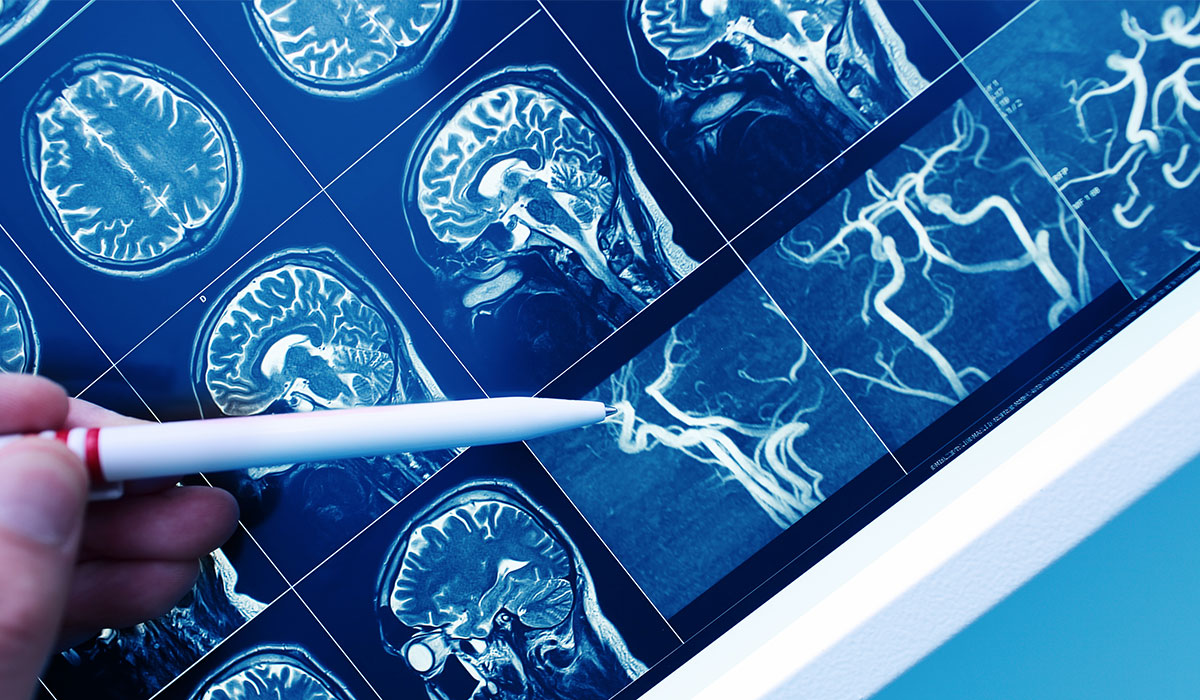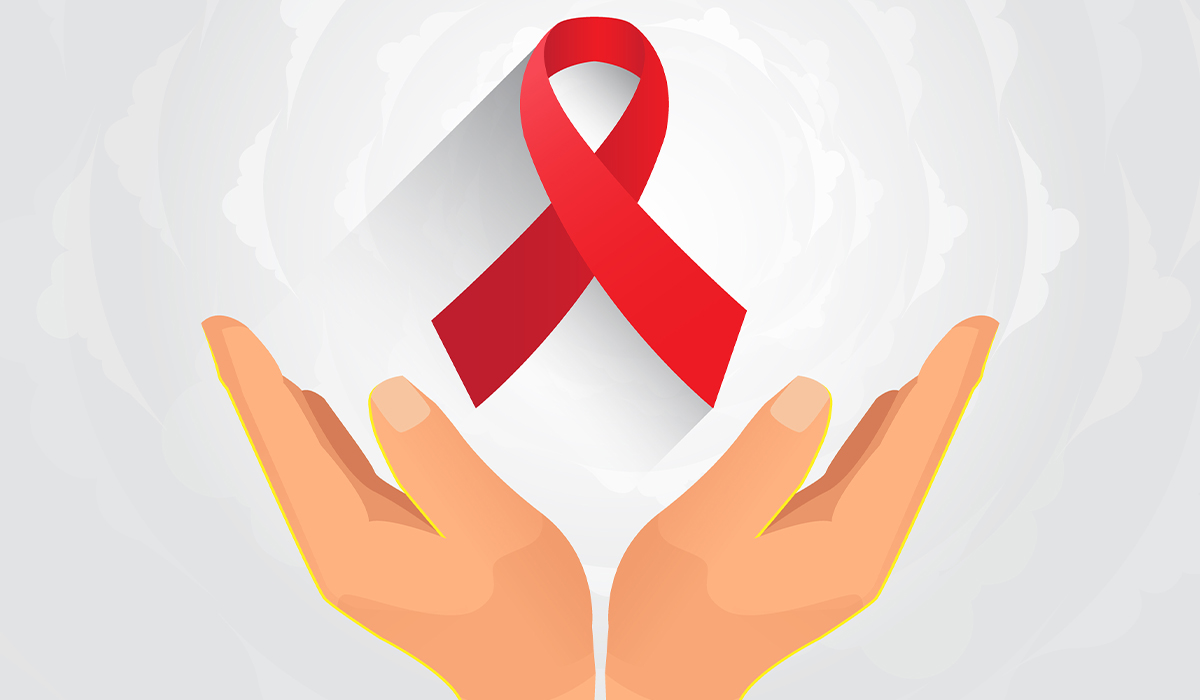The most important is cortisol, which influences the metabolic processes of proteins, fats, and carbohydrates. It also ensures the body’s internal balance maintenance and proper wound healing and enables adaptation to stressful situations.
The pituitary gland regulates the secretion of glucocorticoids by the adrenal cortex. It produces a hormone called adrenocorticotropin – ACTH – which stimulates the adrenal glands to produce cortisol. The cortisol concentration also fluctuates daily because the amount of ACTH released changes during the day. Specialists observe that it is maximum in the morning and minimum around midnight under normal conditions.
The hypothalamus regulates the activity of the pituitary gland. This small brain part produces CRH, which releases ACTH from the pituitary gland. This entire system operates in a negative feedback mechanism. This means that high concentrations of cortisol inhibit the production of ACTH and CRH, while low concentrations increase the production of these hormones.

Causes
The causes leading to the development of Cushing’s syndrome are the basis for its division into the following types:
- Exogenous – meaning caused by the supply of glucocorticosteroids from the outside. It is a consequence of the long-term use of steroids for therapeutic purposes in many diseases. From an epidemiological point of view, this cause of Cushing’s syndrome is the most common.
- Endogenous – in this case the organism produces cortisol in amounts greater than physiological levels.
The specialists divided the latter type of Cushing’s syndrome into two main groups. The first one is ACTH-dependent Cushing’s syndrome. It happens when the adrenal glands increase the production of cortisol, resulting from the increased production of ACTH. The most standard reason is the existence of a pituitary adenoma (benign tumor) that secretes ACTH.
The circumstances in which an ACTH-producing pituitary adenoma causes the manifestation of Cushing’s syndrome is named Cushing’s disease. Another cause of ACTH-dependent Cushing’s syndrome may be the release of ACTH by tumors located outside the pituitary gland, the so-called ecotopic ACTH secretion syndrome. This hormone is most often produced by small cell lung cancer but also by intestinal, thymus, pancreatic, or ovarian cancer.
Another type is ACTH-independent Cushing’s syndrome. Its fundamental characterization is the increase in cortisol production resulting from the adrenal glands’ hyperactivity. The presence of tumors or hyperplastic lesions usually causes this situation.
The main factor leading to the development of an exogenous form of Cushing’s syndrome is the use of preparations containing glucocorticosteroid hormones. The specialists administer them in dermatological and autoimmune disease treatment, after transplants, and in many other clinical situations. The appearance of symptoms of Cushing’s syndrome requires consideration of a change in dosage or an alternative treatment modality, if any.
Cushing’s syndrome can sometimes be associated with:
- Depression
- Anorexia nervosa
- Alcoholism
- Metabolic syndrome
- Polycystic ovary syndrome (PCOS)
Symptoms
The clinical symptoms are caused by an increased concentration of cortisol in the blood, which leads to a disturbance of the body’s internal balance. The Cushing’s syndrome signs are easily noticeable. However, they are not typical of this disease, so it is not always possible to diagnose it immediately.
The characteristic symptoms include:
- A characteristic silhouette resulting from the deposition of fatty tissue. It happens around the chest, neck, and face, with relatively slim limbs. It means that the face of patients with Cushing’s syndrome is rounded and often red, while the neck is short and wide
- Thin skin with purple stretch marks. This symptom appears mainly on the skin of the abdomen, hips, buttocks, thighs, and nipples. Moreover, it is the result of glucocorticosteroids activating enzymes that weaken the connective tissue that builds the skin
- Tendency to bruise, spontaneous bleeding into the skin, and petechiae
- Susceptibility to skin injuries and delayed wound healing
- Weakness and atrophy of the muscles of the limbs and chest
- Poor tolerance to physical exercise
- Tendency to bone fractures resulting from osteoporosis (mainly the ribs, vertebral bodies, and bones forming the pelvis)
- Increased thirst and polyuria – which are the symptoms of impaired glucose tolerance
- Increased appetite
- Weight gain
- Headaches and dizziness resulting from hypertension
- Symptoms of ischemic heart disease
- Symptoms of gastric and duodenal ulcers and kidney stones
- Visual disturbances due to developing glaucoma or cataracts
- Scanty menstrual bleeding or amenorrhea in women
- Decreased potency in men
- Decreased immunity resulting in a tendency to infection
- Emotional disorders, i.e., euphoria or depression, irritability, anxiety, sleep disorders, memory disorders, and in extreme cases psychosis and suicidal tendencies
- High cortisol levels may be accompanied by excess androgen – acne then appears, and in women, male-type hair develops (so-called hirsutism)

Diagnosis
If we suspect that we may suffer from this condition, it is best to see an internist who will refer us to an endocrinologist.
Before starting full diagnostics, the simplest cause of Cushing’s syndrome should be ruled out, i.e., the patient taking medications containing steroids. The Cushing’s syndrome diagnosis can be made based on characteristic clinical symptoms and changes in biochemical tests. In most cases of CS, there are only a few symptoms at the beginning (e.g., hypertension, diabetes, central obesity). The full-blown condition appears only in the progressive stages of the disorder. Hence, the vigilance of the patient and the doctor is necessary to detect early symptoms of the disease and perform laboratory tests that will ultimately confirm its presence.
Based on the interview, the specialist will order screening tests. These include:
- The cortisol level in the blood determination – the cortisol level in healthy people is low in the evening, while in people with Cushing’s syndrome, its concentration increases at night.
- Suppression test – this procedure involves taking a 1 mg (DXM) tablet before going to bed. A patient needs to do a fasting blood test to measure their cortisol level the following day. Daily excretion of free cortisol in urine – to perform this test, collect urine into a container after the first bathroom visit in the morning. Do it in time intervals for 24 hours. The last urine to be collected should come from the first morning urination (right after getting up) the next day. Mark a free-end cortisol in at least two daily urine collections.
- The CRH stimulation test involves measuring the concentration of cortisol and ACTH three times—the first time before CRH administration, then 30 minutes after the injection, and 60 minutes after. Patients with Cushing’s syndrome most often do not respond to CRH.
If the results show an increased cortisol concentration in the body, then the specialist may recommend doing several imaging tests. They are selected depending on the possible cause of Cushing’s syndrome:
- MRI of the pituitary gland (if Cushing’s disease is suspected)
- Computed tomography or magnetic resonance imaging of the adrenal glands (if previous test results indicate the presence of an adrenal tumor)
To help locate an extra pituitary tumor that is secreting excess adrenocorticotropic hormone (ACTH), the specialist may advise doing:
- Computed tomography of the chest and abdomen
- Thyroid ultrasound
- Radioisotope research
Cushing’s Syndrome and Cushing’s Disease
Cushing’s disease is different from Cushing’s syndrome, so the terms cannot be used interchangeably. Although the symptoms of Cushing’s syndrome are the same as the disease and the diagnosis is similar, the causes of their occurrence are different.
Cushing’s disease is caused by a tumor of the pituitary gland located in the middle cranial fossa. It is treated surgically. A suppression test may help diagnose these two ailments. Cushing’s disease can cause Cushing’s syndrome.
Treatment
The treatment method for Cushing’s syndrome depends on its cause. If Cushing’s syndrome is a consequence of Cushing’s disease, which is caused by an adenoma, then surgery is needed. The pituitary tumor is destroyed through the sphenoid sinus with a laser or ionizing radiation. After such a procedure, the patient must be under constant supervision of an endocrinologist because there is a risk of disease recurrence. If the operation fails or the pituitary adenoma cannot be removed, the specialist treats the patient with radiotherapy.
Cushing’s syndrome, caused by extra pituitary tumors, is treated surgically or with radiotherapy or chemotherapy.
The treatment of choice is surgical removal of the adrenal tumor, preceded by the use of drugs that inhibit the production of steroid hormones. They should be administered with great caution because some adrenal tumors respond very strongly to them. The presence of an adrenal tumor secreting large amounts of cortisol causes the tissue of the other healthy adrenal gland to atrophy, and immediately after surgery, it is unable to produce enough of this hormone.

Adrenal steroids are administered during surgery to prevent a dangerous drop in cortisol levels after tumor removal. Hydrocortisone may be necessary for up to two years after surgery – this is how long it takes for the second adrenal gland to resume normal function.
Removal of the adrenal adenoma causes the disease symptoms to disappear within 4-5 weeks. Only in the case of a long duration of the disease may vascular complications resulting from hypertension occur. In the case of adrenal cancer, postoperative treatment and prognosis depend on the stage of the cancer.
If glucocorticosteroid drugs cause the symptoms, you should consult a doctor who may reduce their dose. Please do not stop taking medicines on your own, as it may cause the development of other diseases.
Diet
Diet is also significant in the treatment of Cushing’s syndrome. One of the symptoms of this disease is excessive appetite and the accumulation of fat tissue. The diet of patients with this condition should be low-calorie, with a limited content of simple carbohydrates and saturated fats. Protein products, whole grain products, vegetables, and fruits are recommended. The diet should be rich in products containing calcium and vitamins, including vitamin D and B vitamins, including vegetable oils, dairy products, eggs, fish, almonds, nuts, sunflower seeds, and spinach. To prevent weight gain, patients should also engage in regular physical activity.
Sources
- Cushing Syndrome. NIH. https://www.ncbi.nlm.nih.gov/books/NBK470218/.
- Cushing’s Syndrome. NIH. https://www.niddk.nih.gov/health-information/endocrine-diseases/cushings-syndrome#causes.
- Co-Occurrence of Exogenous and Endogenous Cushing’s Syndromes—Dilemma in Diagnosis. NIH. https://www.ncbi.nlm.nih.gov/pmc/articles/PMC6815529/.
- Molecular Derangements and the Diagnosis of ACTH-Dependent Cushing’s Syndrome. NIH. https://www.ncbi.nlm.nih.gov/pmc/articles/PMC9512149/.
- Physiology, Adrenocorticotropic Hormone (ACTH). NIH. https://www.ncbi.nlm.nih.gov/books/NBK500031/.
- Physiology, Cortisol. NIH. https://www.ncbi.nlm.nih.gov/books/NBK538239/.
- Cushing’s syndrome: from physiological principles to diagnosis and clinical care. NIH. https://www.ncbi.nlm.nih.gov/pmc/articles/PMC4324701/.
- What are the symptoms of Cushing syndrome?. NIH. https://www.nichd.nih.gov/health/topics/cushing/conditioninfo/symptoms.
- Investigation Of Cushing’s Syndrome. NHS. https://www.nbt.nhs.uk/sites/default/files/Investigation%20of%20Cushing%E2%80%99s%20Syndrome.pdf.
- Cushing Disease. NIH. https://www.ncbi.nlm.nih.gov/books/NBK448184/.
- Treatment of Cushing’s Syndrome: An Endocrine Society Clinical Practice Guideline. NIH. https://www.ncbi.nlm.nih.gov/pmc/articles/PMC4525003/.
- Cushing’s syndrome. NHS. https://www.nhs.uk/conditions/cushings-syndrome/.
